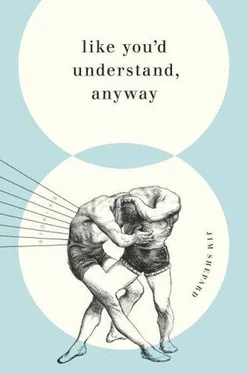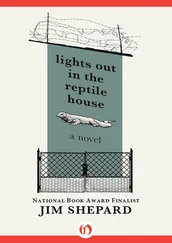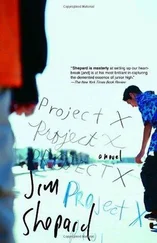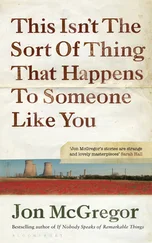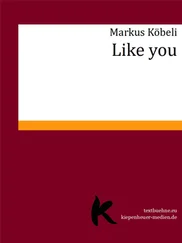Anne-Marie was a market gardener's daughter in Montmartre, her father's establishment a luncheon stop on my infrequent visits home from school. She was his eldest, born the same day as myself, and when we first conversed I imagined that we had loved each other from that date, unawares.
Her first act in my presence was to scratch at a rash on her foot until chided by her father entering the room with the roast. She visited the water closet, and back at the table returned my gaze as if examining a distant coastline. She was still chewing a bit of carrot. From that first meeting I have perched perpetually, in a kind of dreamy distress, on the very edge of relieving my longings. Her lovely large mouth and deep-set eyes with their veiled expression, and her child's posture have been my harbor and receding horizon. Her seat, that first luncheon, was in the sun, and her skin was so fine I could see the circulation of her blood. When she blushed, I could feel the warmth.
I contrived to visit more often. She confided her various sadnesses, her mother having led a life regulated by an intricate and dispiriting routine, much of which centered itself on the needs of her younger sister. Her father's health and general cheerlessness prevented him from finding solace in anything. But even in that company, she found the resources to engage, with animation, in any society offered her, as if the seas that swamped other shipping beat upon her little boat in vain.
With her I tended toward passionate recollection of my own imagined virtues. Without her my private life had been a record of uninterrupted emptiness and misery. Her first letter to me upon my return to school concluded, “I seem to have written you a newspaper instead of a note, as was my intention. My conduct is most mysterious. Well. Until later—”
She saw in me a perceptive enough boy, self-educated in a variety of disciplines, from astronomy to law, from medicine to agronomy. I was tall. I was charitable, and kind to the poor. I played the cello, and seemed someone with whom a good home could be constructed. Her family was poor enough that an executioner's son was still a possibility, but respected enough that she was as good a match as my family would find. For her, marriage to someone like me meant renouncing vanities she had never possessed, and for which she had no desire.
Soon after our marriage I related to her the story of my first execution, a story designed to elicit her pity. From the age of eleven, whenever I was home from school, I had been my father's assistant. When I was sixteen he retired and left me alone on the scaffold with a few of his assistants, now mine. A man named Mongeot was to be bludgeoned and then broken on the wheel for having murdered his mistress's husband. His mistress was to be held under guard and made to witness what transpired. A snowstorm had enveloped the scaffold, coating it in a kind of sleet, and I stood in the wind clutching my collar against the wet while my mulatto did the bludgeoning. The man's mistress shrieked and clawed at her guards' faces and tore at her hair. It took Mongeot two hours to die. I'd worn the wrong boots, and my feet were soaked through and freezing. I could not see for my weeping and misheld the lever when we were in the act of breaking his legs. My grandmother, bundled in robes and representing the family, lost patience and shouted at me. The crowd hissed and showered me with contempt.
Anne-Marie pitied me for such stories but after an expression of sympathy maintained a wary silence. Our newlyweds' happiness was then colored by a kind of quiet. There were other stories I didn't share with her. After Mongeot, a man named Damiens who had tried to stab the King was sentenced to be drawn and quartered. No one had been quartered in France since Ravaillac, more than a century before. I went to my father, who said he had no advice to give. I offered to resign my commission, but my grandmother summoned my uncle, executioner of Reims, to steady me. Our assistants were to handle the preliminaries, and on the appointed day drank until they could barely stand. They tottered between the instruments while the crowd jeered at their fumblings and shouted abuse. The hand that had held the knife was severed and boiling oil and lead were poured into the wound. The man's screams were such that we could not hear each others' instructions. Then the horses only dislocated his limbs without separating them from the trunk. The executioner's sword lodged in one of his shoulder joints. I had to run and find an axe.
Some three months after the fall of the Bastille, the National Assembly took up the issue of renovating the penal code, and in the middle of those proceedings, Dr. Joseph-Ignace Guillotin, deputy from Paris and professor of anatomy on the Faculty of Medicine, set forth his argument favoring a fixed punishment for the same crimes, regardless of the convicted's rank and estate. He reminded the Assembly of the infamies of the unenlightened past and proposed a less barbaric method of capital punishment: automatic decapitation by a mechanism yet to be developed. A Jesuit, he'd left the order, choosing a ministry of the body over that of the soul. He wanted the machinery of execution to be fearful but the death to be easy. There was enthusiasm for his proposal among the revolutionaries: a capital punishment that was mercifully quick and democratic would mark another step toward the regeneration of society. It was pointed out that while the executioner's sword might require two or three strokes, with a machine the condemned man would not be kept waiting. Lally-Tollendal's name was resurrected: some years before, I'd proven unable to dispatch him, requiring my father to take over the blade.
After the usual delay the measure was adopted in the new penal code, and the next challenge became how to cut off all those heads. I was invited to submit a memorandum sharing my views, in which I explained that in any multiple execution, the sword is not fit to perform after the first, but must be either reground and sharpened or replaced by an impractical succession of swords, depending on the number condemned. I also pointed out that for an execution by sword to arrive at the result prescribed by the law, the executioner must be consistently skillful and the condemned at least momentarily steadfast, and that in the event of multiple executions, there would be the issue of blood in such quantities that it would affect even the most intrepid of those to be executed, so that it would be indispensable to find some means by which the condemned could be secured for the blow, and the public order protected.
Dr. Guillotin had begun to lose interest in his idea, but Dr. Antoine Louis, secretary of the Academy of Surgeons, engaged a German pianomaker to build the prototype. There was some difficulty finding men to do the job. They had to be made exempt from signing the usual working papers so that their identities could remain a secret.
The result is what my assistants call the Great Machine. At the heart of its design are two uprights five meters high and fifty centimeters apart, which flank a blade weighing seven kilos. Bolted to the top of the blade is a thirty-kilogram iron bar to heighten the force of its descent. The assembly falls from top to bottom in three quarters of a second. The cutting edge is slanted so that the blow, as it penetrates into the parts it divides, acts as a saw of lightning efficiency. The blade lands at the head of a narrow tablelike arrangement for the condemned. From a distance the whole thing has the austerity of a diagram. The grooves are rubbed down with soap before each use. Disassembled, it's stored in a shed known as the Widow's House.
My sons and I supervised its first test at the Bicêtre Hospital on the outskirts of Paris. Before us and the assembled dignitaries Dr.
Louis beheaded a bundle of straw, a live sheep, and several corpses, the last of which required three tries, so it was decided the height of the uprights would be extended, and weight added to the blade. At that very first demonstration, I was heard to wonder aloud whether the machine's very efficiency would prove to be a source of regret.
Читать дальше
